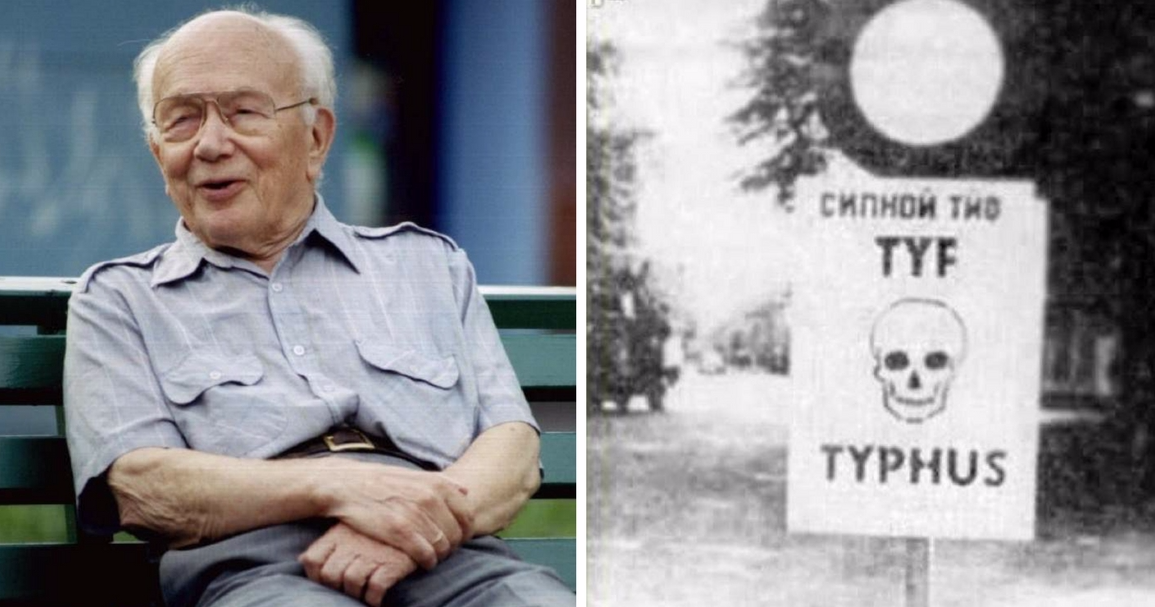When a man sought out a doctor in Poland with a unique request, it changed the war for many Jewish people who were being held captive by the Nazis. This man was one of thousands of Polish people who were forced by the Nazi occupiers to work in German labor camps.
He was on a 14-day leave to visit his family, but his time was running out. He was desperate to escape his work at the camp, but he knew that if he did not return he and his family would be hunted down and sent to a concentration camp- often a death sentence in many cases. He toyed with the idea of suicide but came up with a solution that would spare his life and prevent him from returning to the camp.
A Solution For One Man, Saved Thousands
He knew that if he had a serious disease, verified by a doctor, he wouldn't be forced to return to work. That's when 2 doctors stepped up to help the man. They offered him an injection, which is accepted. The doctors then drew a sample of his blood and sent it to a German lab.
Shortly after, they received a telegram that indicated the patient was "Weil-Felix positive - the man had tested positive for typhus. This telegram proved that the man had an infectious disease and would be released from his work duties at the camp. He was also free from any future detention, as were his family members that he had come into contact with.
After typhus wrecked havoc in the trenches during World War I, the Nazis were terrified of a possible outbreak among their soldiers. Doctors were required to report any suspected cases of the disease so that Polish people could be quarantined and spared detention. Jews however, were executed.
The doctors, however, did not actually make their patient sick. Even in desperate times, that would be unthinkable to someone who's job is to heal. Instead this was their own spin on "faking sick", meant to shield their patients and neighbors from persecution from the Nazi occupiers.
His Private War
This wasn't the first time that one of the doctors, Eugene Lazowski, had a hand in defying the Nazis. After escaping a POW camp by scaling the wall and riding off with an unattended horse cart, he made his way home to work for the Polish Red Cross.
His house backed up against the Jewish Ghetto where disease was running rampant. He was forbidden to aid the ill by the occupiers, but that didn't stop him. When someone in the ghetto was ill, they would tie a rag on the fence and Lazowski would sneak in at night to bring medical supplies to help treat the sick. He exaggerated the amount of supplies and medicine he used on his non-Jewish patients so the Nazis wouldn't catch on to his extra-curriculars.
"When many cases were reported from an area, it was declared by the German Public Health Authority to be an "˜epidemic area,'" the two doctors wrote after the war. "This situation produced some advantages for the people, because the Germans were inclined to avoid such territories and the population was relatively free from atrocities."
The Epidemic
That's when the doctor decided to create false-positive results to create a typhus "epidemic" in the area he lived, to keep the Germans away. Starting with the laborer on leave, he began to give non-Jewish patients with symptoms resembling the early stages of typhus, including fever, cough, rash, and aches, injections.
They didn't share what they were doing to even their patients, only later revealing their scheme in 1977.
They even mimicked a true epidemic where there were more cases in fall and winter, instead of spring and summer. Also to keep the authorities from getting wise, they would send 'infected' patients to other doctors for diagnosis.
"More and more positive Weil-Felix reactions were reported by German-controlled laboratories to German authorities and confirmed by our reports," the doctors wrote. "Soon the number of reported cases was sufficiently large to declare the area of our practice (about a dozen villages) an "˜epidemic area,' with relative freedom from oppression."
When people weren't dying of the disease, the Nazis questions the authenticity of the epidemic. They sent a team of German doctors to the town to investigate.
Lazowski greeted his guests with a spread of Polish food and vodka, which the senior German doctors enjoyed while their underlings toured the town with the doctor. Prior to their arrival, Lazowski had gathered the most unhealthy-looking patients, all of which were injected with his fake virus, and put them together for viewing. After a few blood tests confirmed the disease, they quickly left. The senior staff must have been having such a good time, they didn't double-check.
The quarantined area that the doctors created became a safe place for Polish Jews to hide under the fake epidemic. It was estimated that 8,000 people were rescued from being killed or imprisoned during their 3-year mission.
Life After The War
In 1957, Lazowski moved to the United States and became a professor of pediatrics at the University of Chicago in 1976. He wrote a memoir entitled Prywatna Wojna (My Private War), depicting his time in Poland.
Retiring from his practice in the late 1980s, he lived with his daughter in Oregon where he died in 2006.
Source: Atlas Obscura / Wikipedia


